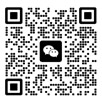正文:【摘要】 目的 初步探讨不同BMI患者在120kV管电压下进行冠状动脉CTA检查时,评价图像质量是否存在差异性。方法 收集经冠状动脉CTA检查患者128例,以BMI进行分为四组,分别为A组(19.0kg/m2<BMI≤24.0 kg/m2)25例,B组(24.0 kg/m2<BMI≤27.0 kg/m2)48例,C组(27.0 kg/m2<BMI≤30.0 kg/m2)28例,D组(BMI>30.0kg/m2)25例,采用120kV管电压,自动mAs条件扫描,选用碘海醇(350mg/ml),对比剂用量55~85ml。所得图像采用主、客观评价相结合的方法,对冠状动脉9个节段即右冠脉近、中、远段、左主干、左前降支近、中、远段、左回旋支近、远段图像进行分级评价及测量增强水平CT值。以右冠状动脉近段、左主干、左前降支近段、左回旋支近段四个节段为研究对象,测量增强后CT值及SD和同水平前胸壁肌肉组织的CT值及SD,同时记录扫描视野(FOV)、扫描长度(Length)、扫描时间(ST),图像噪声等。计算信噪比(SNR)、噪声比(CNR)。结果 ①四组研究对象一般资料、扫描长度、扫描时间差异性不具有统计学意义(P>0.05),扫描视野差异性有统计学意义(P小于0.05),以D组扫描视野最大;②上述9个冠脉节段图像主观评价和增强水平CT值差异性无统计学意义(P>0.05),右冠状动脉近段、左主干、左前降支近段和左回旋支近段4个冠脉节段图像噪声、SNR差异无明显统计学意义,CNR差异具有统计学意义(P<0.05),以D组最小。结论 采用同一管电压,不同BMI人群图像质量存在差异性,应根据BMI适当调整管电压,获得较好的图像质量。
【关键字】 体重指数 体层摄影术,X线计算机 图像质量
[Abstract] Objective to preliminarily if there are diffrences in image qulaity between different BMI patients under 120 kv tube voltage during coronary CTA inspection. Methods collected by coronary CTA examination, 128 cases of patients, which is divide into four groups, including group A(19.0kg/m2<BMI≤24.0 kg/m2) in 25 cases, group B (24.0kg/m2<BMI≤27.0 kg/m2) in 48 cases, group C (27.0kg/m2<BMI≤30.0 kg/m2) in 28 cases, group D (BMI>30.0 kg/m2) in 25 cases, using 120 kV tube voltage, automatic scanning mAs condition, selection of iodine sea alcohol(350 mg/ml), contrast agent 55~85 ml. The images are evaluated by adopting the combination of subjetive and objective method, the coronary artery 9 segments are evaluated by image classification and measured by enhance the level of CT value, including the right coronary artery near, middle and far, left main, left anterior descending branch near, middle and far section, left circumflex branch near and far segment. The proximal right coronary artery , left main artery, proximal left anterior descending artery and proximal left circumflex artery are selected as the research object, to measure values of enhanced CT value and SD and the same level of the muscle tissue of anerior chest wall too. At the same time record scanning view (FOV), scanning length(Length), the scanning time(ST), image noise, etc. Calculated the signal-to-noise ratio(SNR) and noise ratio (CNR).Results (1) the difference of general information in the four groups, scanning length and time is not statistically significant (P>0.05), and scanning field of vision difference was statistically significant (P<0.05), in group D scans the largest view; (2) the 9 coronary segments image subjective evaluation and enhanced the level of CT value difference has no statistically significant (P>0.05), the image noise and SNR of right coronary artery in anterior descending, left main, left nearly and left circumflex branch nearly four coronary segments,there was no obvious statistically significant,CNR differences statistically significant(P<0.05), group D was the minimum. Conclusion using the same tube voltage in different BMI groups,there was difference in image quality。In order to achieve good image quality, the tube voltage should be adjusted according to BMI.
[Key words] BMI; tomography, X-ray computed;image quality
冠状动脉CT血管造影作为现在常用无创排查冠心病的方法之一,其检查功能日臻完善。低对比剂用量和低辐射剂量的研究是近几年冠脉CTA检查研究的热点,此类研究多以体重指数即BMI为指导对被检人群进行分类,都取得了预期减少对比剂用量和辐射剂量的目的。这些检查冠脉图像质量都必须满足影像诊断需要。针对图像质量,同一管电压不同BMI个体是否存在差异性,我们将在以下的研究数据中寻找答案。
1 资料与方法
1.1 一般资料 收集我院2014年9月至12月间进行疑似冠心病冠脉CTA检查的患者128例,按BMI分为4组。
各组资料如下:A组25例(19.0<BMI<24.0),男性12例,女性13例,年龄36~70岁,平均年龄(55.16±7.64)岁,身高155~180cm,平均(166.92±6.52)cm,体重50~73kg,平均(62.36±6.24)cm,心率46~69次/min,平均(57.35±6.15)次/min,BMI19.05~23.87kg/cm2,,平均(22.34±1.32 )kg/cm2;B组48例(24.0≤BMI<27.0),男性26例,女性22例,年龄32~69岁,平均年龄(53.57±9.03)岁,身高155~176cm,平均(165.93±5.55)cm,体重63~92kg,平均(77.77±7.26)kg,心率46~68次/min,平均(56.70±5.32)次/min ,BMI27.04~29.74kg/cm2,平均(28.45±0.86)kg/cm2; C组30例(27.0≤BMI<30.0)男性26例,女性14例,年龄29~77岁,平均年龄(55.72±9.64)岁,身高155~186cm,平均(168.21±8.39)cm,体重75~110kg,平均(87.12±8.39)kg,心率50~66次/min,平均(56.64±4.74)次/min ,BMI30.08~26.89kg/cm2,平均(25.34±0.87)kg/cm2;D组(BMI≥30.0)男性26例,女性14例,年龄35~68岁,平均年龄(52.60±9.02)岁,身高155~181cm,平均(166.60±7.30)cm,体重75~110kg,平均(87.12±9.40)kg,心率50~66次/min,平均(56.64±4.72)次/min ,BMI30.08~33.95kg/cm2,平均(31.31±1.04)kg/cm2。
病例排除标准:①有碘剂过敏史;②年龄<18岁;③严重心理障碍;④严重甲状腺疾病;⑤严重心、肝、肾功能不全;⑥严重心率不齐和呼吸运动伪影过大;⑦进行冠脉支架及搭桥的患者。所有患者签署知情同意书。
1.2 相关设备及扫描方法
设备采用我院Philips Brilliance 64排CT机及工作站,均采用120kv管电压,自动mAs,重建层厚0.67mm,矩阵512×512,对比剂选用碘海醇(350mgI/100ml),流速5.0ml/s,用量55~85ml,采用后心电门控技术,扫描范围包含整个心脏区域,使用智能跟踪触发技术,监测点置于气管分叉水平降主动脉中心位置,触发阈值为150Hu,延迟时间为5s。所有患者检查前进行呼吸训练、适当调整控制心率(≤70次/min)。图像后处理技术:多层面重组(MRI)、最大密度投影(MIP)、曲面成像(Curve)、容积再现成像(VR)。
1.3 图像评价
为了更好的评价图像,本组实验采用主观评价和客观评价相结合的方法。
主观评价由两位高年资主治医师进行双盲评价,意见不一致时商量决定。图像质量采用评级法:Ⅰ级冠状动脉无伪影,血管轮廓清晰;Ⅱ级,冠状动脉局部有伪影或血管轮廓模糊; Ⅲ级冠状动脉血管轮廓模糊或血管显示中断或大部分或全部出现伪影。其中前两级可用于影像诊断和评价,Ⅲ不可用于影像诊断。冠状动脉节段采用美国心脏病协会改良分段方法,即15个节段,对右冠脉近中远段、左主干、前降支近中远段三个节段、回旋支近远段共9个进行上述分析。
1/4 1 2 3 4 下一页 尾页
 《计算机集成制造系统》
《计算机集成制造系统》 《研究生教育研究》
《研究生教育研究》 《环境与可持续发展》
《环境与可持续发展》 编辑QQ
编辑QQ  编辑联络
编辑联络 

